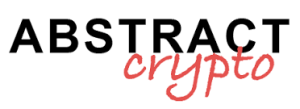The federal conversation over stablecoin regulation is intensifying as Ottawa prepares for a Nov. 4 federal budget update. Finance Minister François-Philippe Champagne is expected to signal policy direction for digital payments and tokenised cash.
How will Canada stablecoin regulation shape the Nov. 4 federal budget?
Bloomberg reported that government officials have met with regulators and industry in recent weeks to advance policy work, signalling momentum ahead of the budget update (Bloomberg). Officials are weighing whether new rules should accompany the budget or follow as dedicated legislation.
Canada still lacks a comprehensive legal framework for stablecoins, and the federal review is framed by concerns about payment modernisation and financial stability. USD-pegged stablecoins now exceed $300 billion in total value, underscoring the scale of the issue.
What is the Bank of Canada’s view on stablecoin regulation and Bank of Canada stablecoins?
The Bank of Canada has urged clearer rules to modernize payments and warned Canada risks falling behind peers, a stance reflected in recent public comments by Ron Morrow. In this context, the central bank frames regulation as necessary to protect the payment system while enabling innovation.
Policymakers are balancing systemic-risk concerns with the need to allow fiat-backed instruments to operate under clear custody and reserve standards. Note: clarity on reserve audits and issuer liability will be central to any final rules.
In this context, market infrastructure may prove as consequential as statutory language when it comes to adoption.
Banks, payment processors and issuers are likely to press for precise audit protocols and interoperability requirements that will determine which arrangements are commercially viable. As the Bank of Canada has emphasised, “clear standards are a precondition for resilient payment systems” (Bank of Canada).
Does the GENIUS Act affect QCAD Stablecorp token and USDC availability in Canada? In brief:
The US GENIUS Act, passed in June, creates a regulatory framework for fully collateralized dollar-backed stablecoins and is set to go into effect in January 2027, a model Canadian officials are watching for alignment with domestic plans.
That alignment could ease cross-border acceptance of regulated tokens and influence rules for fiat collateralized stablecoin issuance.
QCAD by Stablecorp is a fiat-collateralized 1:1 CAD token already issued for Canadian use, while USDC remains available in Canada; by contrast, Tether support for USDt was discontinued in 2023. A transnational framework similar to the GENIUS Act may speed licensing and clarity for issuers and banks.
In brief, the coming budget and parallel regulatory moves aim to close Canada’s legal gaps and coordinate with US rules to govern large USD-pegged markets and domestic CAD stablecoins.


